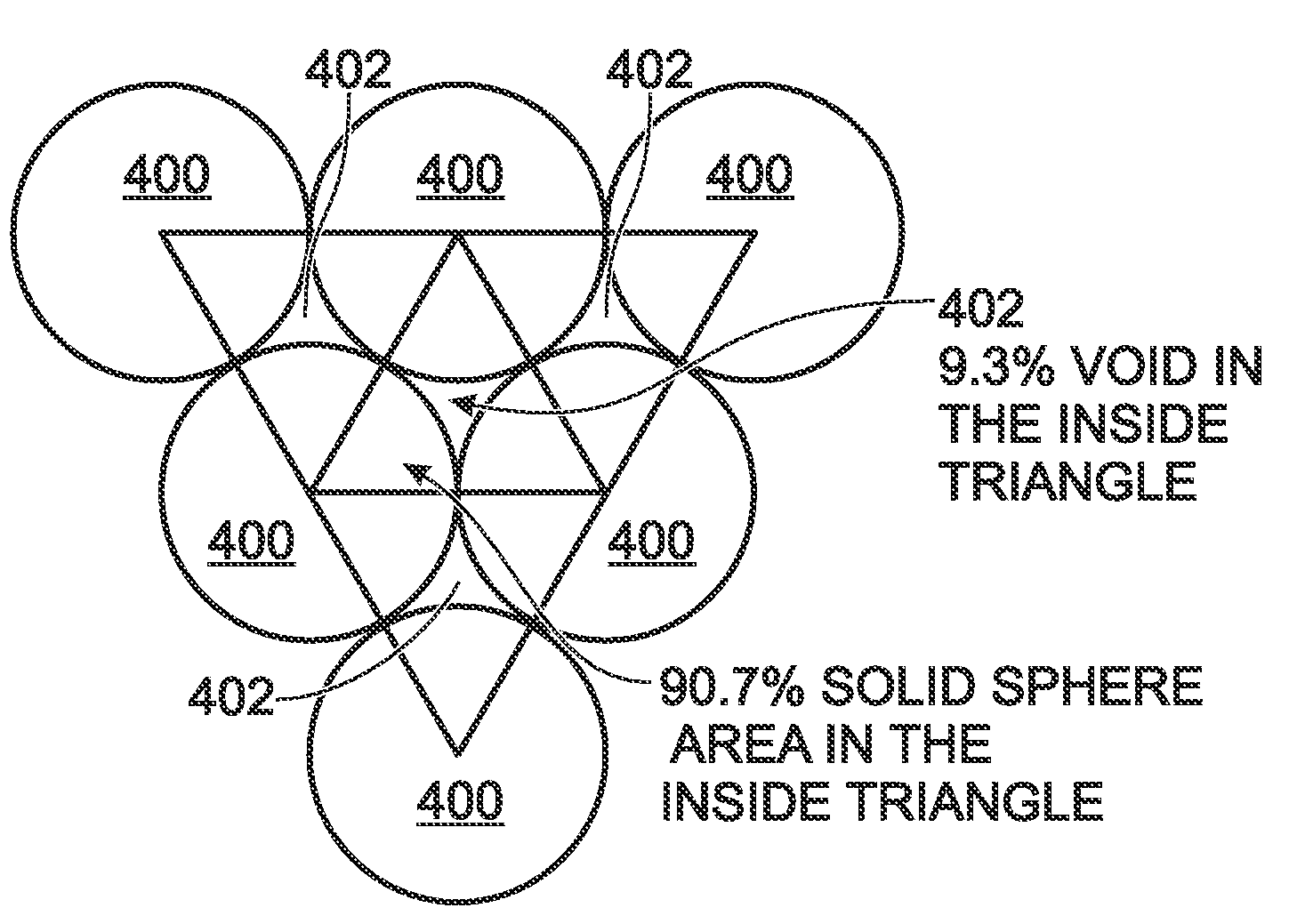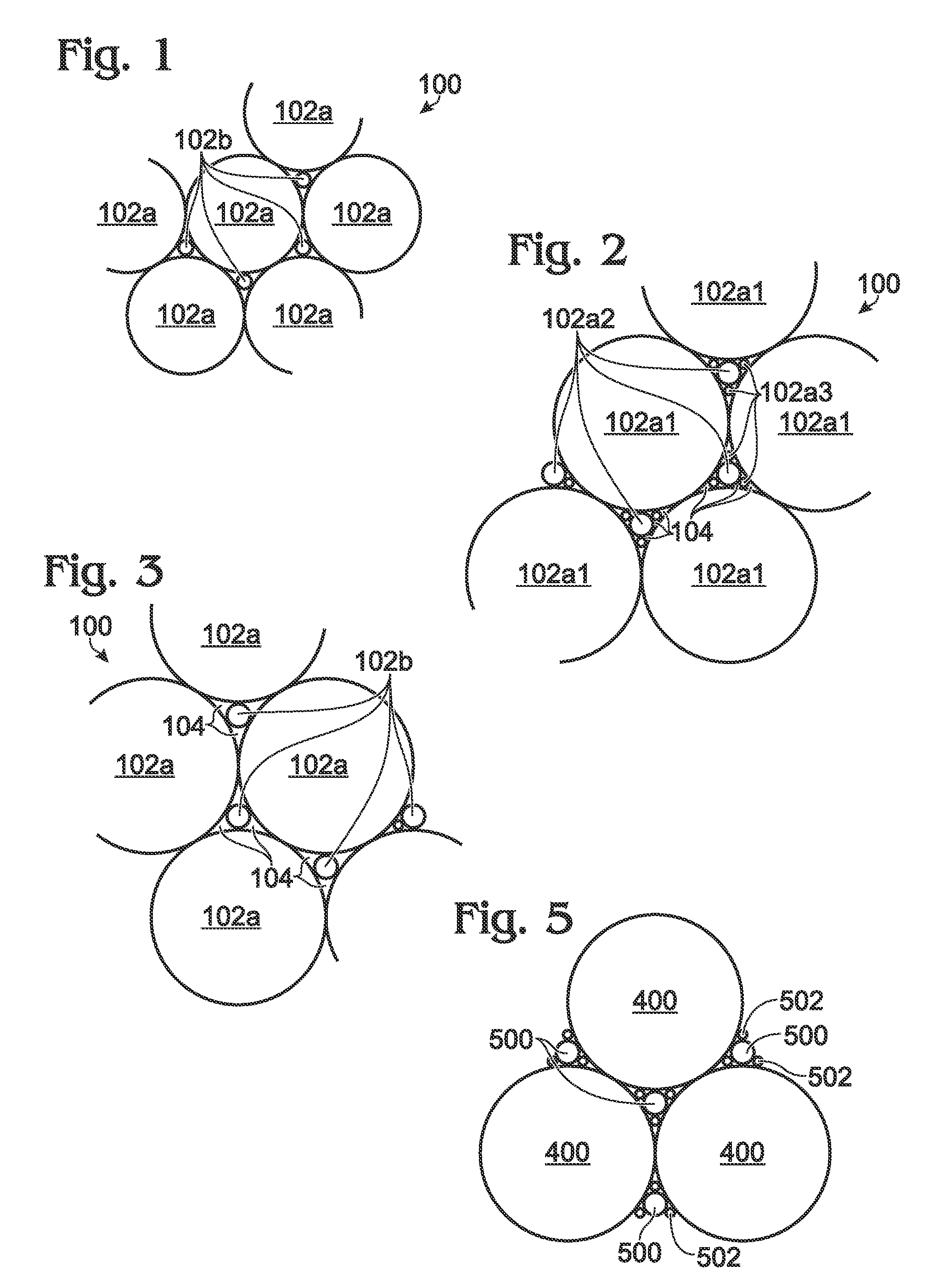Silicon Nanoparticle Precursor
a technology of nanoparticles and precursors, applied in the field of integrated circuit fabrication, can solve the problems of many claimed materials being flammable, limited by cost and safety considerations, and many metal conductors, and achieve the effect of maximizing the packing of si nanoparticles, or minimizing the amount of liquid silane needed
- Summary
- Abstract
- Description
- Claims
- Application Information
AI Technical Summary
Benefits of technology
Problems solved by technology
Method used
Image
Examples
example 1
[0040]Mix Si particles in a size ratio of around 77:32:17 or 77:32:17:D, where D=12˜14. As an example, the sizes of the particles can be: 39 nm, 16 nm, and 8˜9 nm. The ratio of wt. % is: 956 gm (39 nm):69 gm (16 nm):21 gm (8˜9 nm). Since the nanoparticle material is silicon in this example, the weight ratio is directly proportional to the volume ratio as shown in the table of FIG. 6.
[0041]Add a liquid silane compound dissolved in an organic solvent, with volume ratio of 5˜15% of the total volume. When liquid silane is added, Si nanoparticles are arranged in two or more classes. For example, 77:32, 77:32:17, or more combinations.
example 2
[0042]Mix Si nanoparticles with Ge nanoparticles, in a size ratio of 77 (Si):32 (Ge) or 77 (Si):32 (Si):17 (Ge). There are multiple ways to form the mixture. The weight ratio is adjusted according to the density of silicon and germanium, and follows the volume ratio of the table in FIG. 6.
[0043]Annealing can be performed in an inert environment using a furnace, laser, rapid thermal annealing (RTA), or by flash lamp annealing method.
[0044]Although the addition of liquid silane or Ge can help form conduction channels among Si nanoparticles at a much lower temperature, it is also possible to form Si films by arranging the nanoparticles in proper size ratio without the addition of liquid silane or Ge. Si nanoparticles with size ratio of 77:32:17 or 77:32:1.7:12˜14 can be mixed in a dispersion solution and applied onto substrates. Sintering is then performed using one of the above-mentioned annealing methods.
[0045]FIG. 7 is a flowchart illustrating a method for forming a Si nanoparticle ...
PUM
| Property | Measurement | Unit |
|---|---|---|
| temperature | aaaaa | aaaaa |
| sizes | aaaaa | aaaaa |
| sizes | aaaaa | aaaaa |
Abstract
Description
Claims
Application Information
 Login to View More
Login to View More - R&D
- Intellectual Property
- Life Sciences
- Materials
- Tech Scout
- Unparalleled Data Quality
- Higher Quality Content
- 60% Fewer Hallucinations
Browse by: Latest US Patents, China's latest patents, Technical Efficacy Thesaurus, Application Domain, Technology Topic, Popular Technical Reports.
© 2025 PatSnap. All rights reserved.Legal|Privacy policy|Modern Slavery Act Transparency Statement|Sitemap|About US| Contact US: help@patsnap.com



